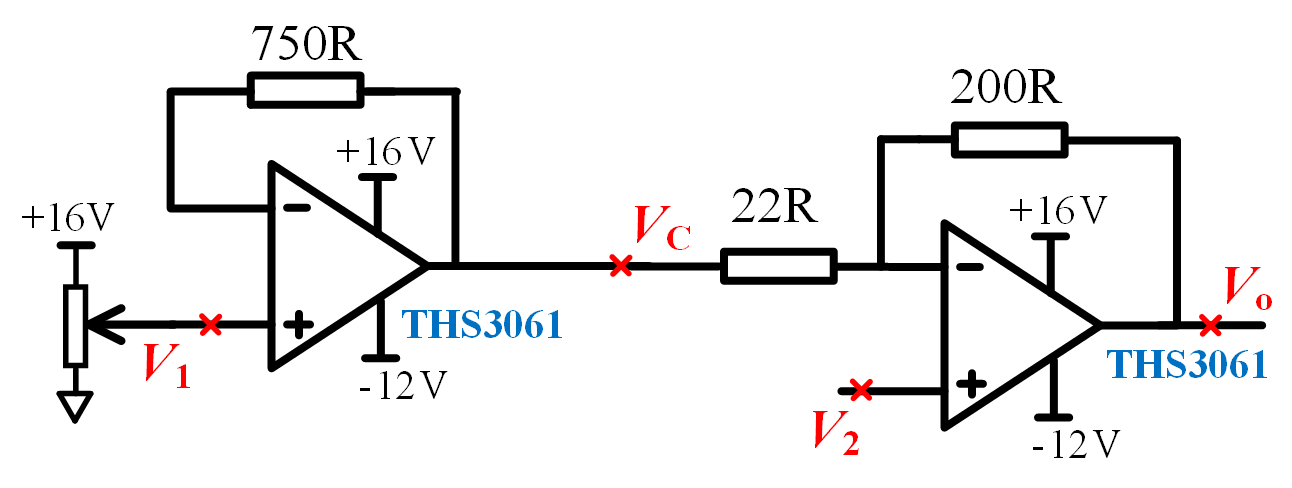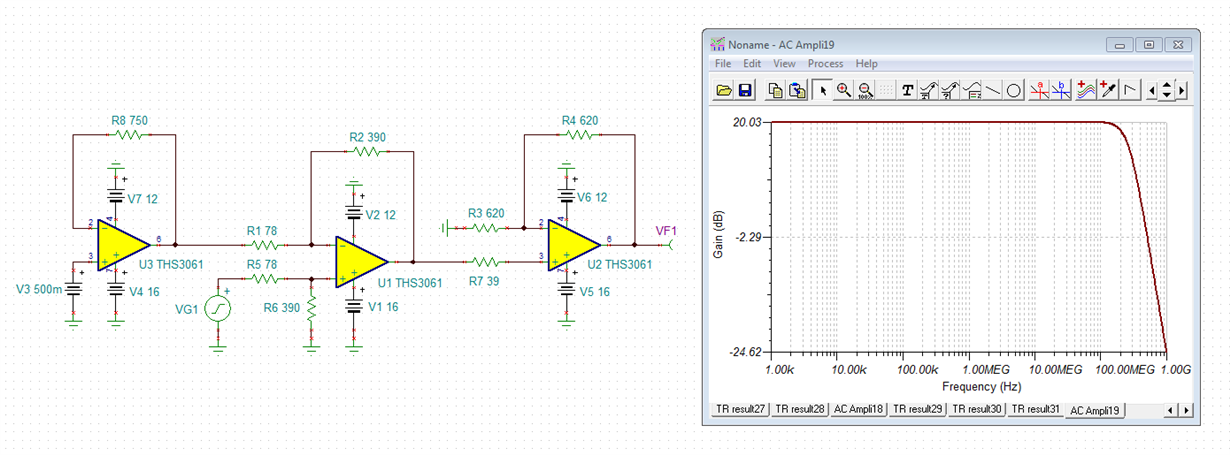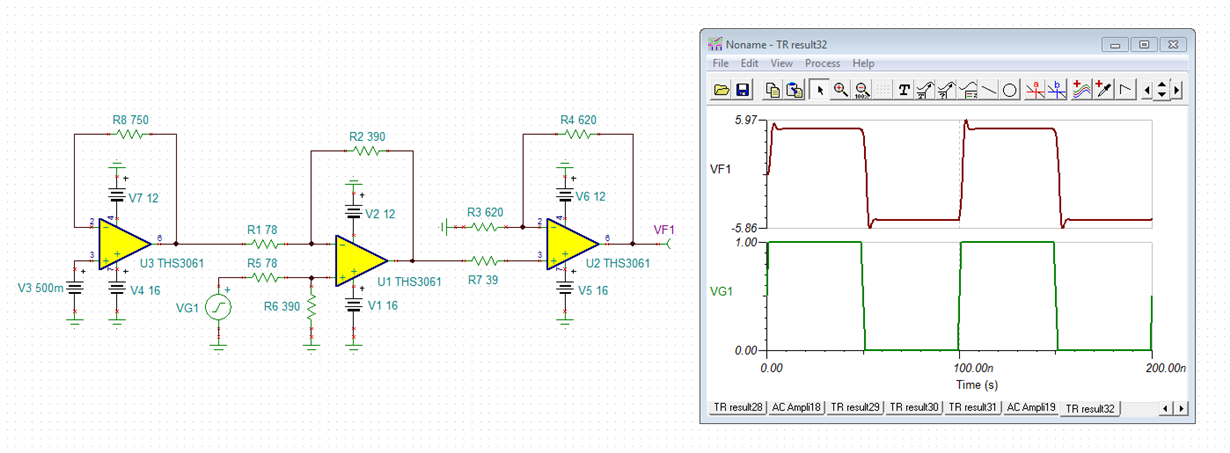Other Parts Discussed in Thread: OPA172, THS3062
Dear TI expert,
Below is my schematic. I want to use THS3061 to generate output voltage Vo=10*V2-5, where V2 is between 0V and 1V. At present I use THS3061 as voltage-follower to make Vc follow V1 as 0.55V, and V1 is obtained by sliding rheostat as shown below. In my further design, to generate different Vo function, I may need to adjust Vc, whose value, however, will always be no more than 3V.
Besides the method I've adopted, I just wonder if there are better ways to obtain a more stable reference voltage, Vc ?
Regards
Yatao






